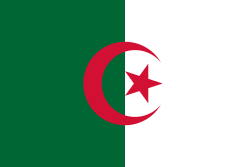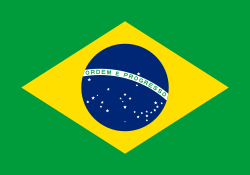Tiangongprogrammet

Tiangongprogrammet (kinesiska: 天宫空间站工程; pinyin: Tiāngōng kōngjiānzhàn gōngchéng) är Kinas program för att skapa en modulär rymdstation jämförbar med Mir. Programmet är en del av Shenzhouprogrammet, Kinas program för bemannade rymdfärder, och drivs ensamt av Kina utan några internationella partners.
Första modulen, Tianhe, sköts upp 29 september 2021. När stationen är färdigställd kommer den att bestå av fyra moduler: en boendemodul, två laboratoriemoduler och ett rymdteleskop.
Den modulära rymdstationen föregicks av två rymdlaboratorier: Tiangong-1 och Tiangong-2.
Tiangong betyder ungefär himmelskt palats.
Delar
Fas 1: Rymdlaboratorier
Första fasen i att skapa en kinesisk närvaro i låg omloppsbana bestod i att skapa tre rymdlaboratorier för att testa teknik, innan en modulär rymdstation kunde konstrueras. [1]
Tiangong-1: målfarkost
Den kinesiska dockningsmålfarkosten bestod av en bränsle- och framdriftsdel, en laboratoriedel och två dockningsportar. Stationen var 10,5 m lång och 3,4 m i diameter. Den vägde 8 000 kg.
Syftet med Tiangong-1 var i första hand att demonstrera Kinas förmåga att docka två farkoster i omloppsbana, men även att utföra experiment under den tid stationen var bemannad. Stationen kunde under korta perioder hålla en besättning om tre personer.
Stationen återinträdde i jordatmosfären 2 april 2018 och brann upp.
Tiangong-2: rymdlaboratorie
Kinas andra rymdstation visade framförallt att längre vistelser var möjliga med den teknik Kina hade. Stationen tankades innan återinträdet av en robotfarkost, Tianzhou-1. Tiangong-2 var 14,4 m lång och 4,2 m bred. Den vägde under 10 000 kg.
Stationen sköts upp 15 september 2016 och återinträdde i atmosfären 19 juli 2019. Vid återinträdet hade Kina visat att de kunde manövrera en rymdstation och fylla på bränsle på ett automatiserat sätt. Stationen var bemannad mellan 19 oktober och 17 november 2016.
Tiangong-3
Ett tredje rymdlaboratorium planerades, men projektet lades ner då CNSA ansåg sig redo att gå vidare till nästa fas i projektet: en modulär rymdstation. Denna tredje station var från början tänkt att vara en förbättrad version av Tiangong-2.
Fas 2: Rymdstationen Tiangong

Den modulära rymdstationen Tiangong började konstrueras 29 april 2021 då huvudmodulen, Tianhe, sköts upp. 24 juli 2022 sköts den första rymdlaboratoriemodulen upp. I oktober 2022 sköts den tredje modulen upp. Kina planerar även att skjuta upp ett rymdteleskop som är jämförbart med Hubble som periodvis kommer att vara dockat med rymdstationen.
Huvudmodulen i rymdstationen är baserad på huvudmodulen i den sovjetiska rymdstationen Mir med en längd på 18,1 m och en bredd på 4,2 m. De två laboratoriemodulerna kommer vara snarlika Tiangong-2.
Referenser
- Den här artikeln är helt eller delvis baserad på material från engelskspråkiga Wikipedia, Tiangong program, 20 juli 2022.
- ^ David, Leonard (7 mars 2011). ”China Details Ambitious Space Station Goals”. SPACE.com. http://www.space.com/11048-china-space-station-plans-details.html. Läst 20 juli 2022.
| ||||||||||||||||||
Media som används på denna webbplats
MAVEN at Mars, Artist's Concept. This artist's concept depicts NASA's Mars Atmosphere and Volatile EvolutioN (MAVEN) spacecraft near Mars. MAVEN is in development for launch in 2013 and will be the first mission devoted to understanding the Martian upper atmosphere. The mission's principal investigator is Bruce Jakosky from the Laboratory for Atmospheric and Space Physics at the University of Colorado.
The goal of MAVEN is to determine the role that loss of atmospheric gas to space played in changing the Martian climate through time. MAVEN will determine how much of the Martian atmosphere has been lost over time by measuring the current rate of escape to space and gathering enough information about the relevant processes to allow extrapolation backward in time.
NASA Goddard Space Flight Center in Greenbelt, Md. manages the project and will also build some of the instruments for the mission. In addition to the principal investigator coming from CU-LASP, the university will provide science operations, build instruments, and lead education/public outreach. Lockheed Martin of Littleton, Colo., is building the spacecraft and will perform mission operations. The University of California-Berkeley Space Sciences Laboratory is also building instruments for the mission. NASA's Jet Propulsion Laboratory, Pasadena, Calif., will provide navigation support, the Deep Space Network, and the Electra telecommunications relay hardware and operations.
For more information about MAVEN, visit www.nasa.gov/maven.The Flag of Europe is the flag and emblem of the European Union (EU) and Council of Europe (CoE). It consists of a circle of 12 golden (yellow) stars on a blue background. It was created in 1955 by the CoE and adopted by the EU, then the European Communities, in the 1980s.
The CoE and EU are distinct in membership and nature. The CoE is a 47-member international organisation dealing with human rights and rule of law, while the EU is a quasi-federal union of 27 states focused on economic integration and political cooperation. Today, the flag is mostly associated with the latter.
It was the intention of the CoE that the flag should come to represent Europe as a whole, and since its adoption the membership of the CoE covers nearly the entire continent. This is why the EU adopted the same flag. The flag has been used to represent Europe in sporting events and as a pro-democracy banner outside the Union.bendera Indonesia
Flag of Iran. The tricolor flag was introduced in 1906, but after the Islamic Revolution of 1979 the Arabic words 'Allahu akbar' ('God is great'), written in the Kufic script of the Qur'an and repeated 22 times, were added to the red and green strips where they border the white central strip and in the middle is the emblem of Iran (which is a stylized Persian alphabet of the Arabic word Allah ("God")).
The official ISIRI standard (translation at FotW) gives two slightly different methods of construction for the flag: a compass-and-straightedge construction used for File:Flag of Iran (official).svg, and a "simplified" construction sheet with rational numbers used for this file.
Flag of Israel. Shows a Magen David (“Shield of David”) between two stripes. The Shield of David is a traditional Jewish symbol. The stripes symbolize a Jewish prayer shawl (tallit).
Författare/Upphovsman: Craigboy, Licens: CC BY-SA 3.0
Drawing of China's large orbital station, based off of this image (http://europe.chinadaily.com.cn/china/2011-04/26/content_12395890.htm). May not be to scale.
Författare/Upphovsman:
- Tiangong_1_drawing.png: Craigboy
- derivative work: 70.49.127.65
- Vectorized by Waterced
Drawing of the Tiangong-1.



























